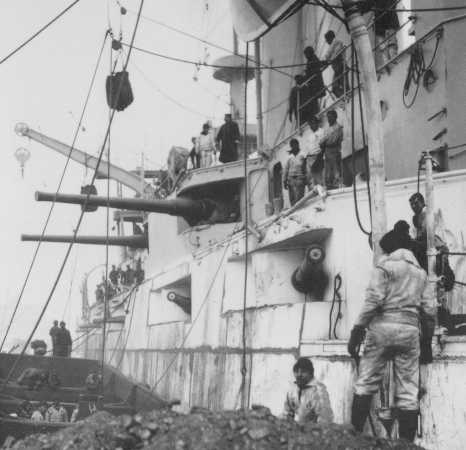| Notes:
1) The Mark 10 mounting was evaluated by
Admiral Charles O'Neil, chief of the Bureau of Ordnance, as being "simple
and strong, all parts are accessible, it has elevating gear on both sides
and friction brakes in both the elevating and training gear, it works easily,
one man being able to train and elevate with facility." However,
it was apparently difficult to manufacture, with a third of the mountings
being rejected by the bureau because of faulty recoil slides.
2) The hoists for these guns were electrically
powered and could deliver one complete round every ten seconds to each
gun.
3) The ships of the Maine class were reduced
to eight guns in 1909. The removed guns were then reused on auxiliary
ships during World War I. |
